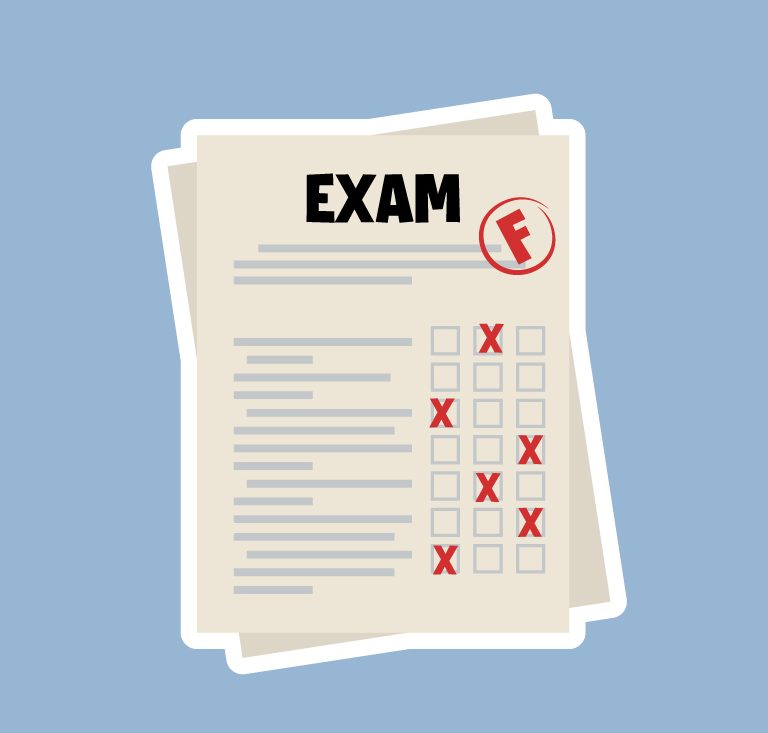No child should be left behind. At least, not in their education. But when President Geroge W. Bush signed the No Child Left Behind bill into action in early 2002, he created a spiraling effect of standardized testing across grade levels. In 2015, when President Barack Obama signed the Every Student Succeeds Act, he continued to push state-wide testing, but left more control up to states, and by extent, to individual school districts themselves. This has led to a ricocheting effect of grade inflation across the nation that is having complicated effects on America’s students.
But there’s one main question on everyone’s minds: does grade inflation hinder a student’s ability to get into “good” colleges? As more universities turn toward test-optional submissions, a student’s GPA has never been more important, and when that average is boosted through less-than-accurate grade proportions, the game for getting into college becomes even harder.
According to The Hechinger Report, discrepancies between GPAs and ACT scores from 2010 to 2021 have been growing. Students who have an A average, meaning the majority of their grades are an A, have consistently been scoring lower on the ACT than in decades past. The report sites how “a student with a solid B (3.0) average was likely to have an ACT score of 19 in 2010, but only 15 in 2021.” But this is in terms of nationwide findings; looking into specific school districts like Fairfax County Public Schools (FCPS) yields the same kind of numbers but more jarring results.
In 2009, Fairfax County parents organized Fairgrade, a protest organization against the harsh grading within the county. At the time, only a 94% or higher in a class meant receiving an A, 93% was a B+, something parents felt was a disadvantage to their children. After debating with the school board, FCPS decided to change their grading policies. Since that decision in 2009, the grading rulebook for the county has changed countless times: rolling gradebooks have come and gone and reappeared, the 100-point scale has scaled down and back up, and the weight of assessments versus assignments in any given syllabus has never remained the same.
In late 2022, the FCPS school board began yet another discussion on changing grading policies. The board is considering getting rid of final grades based on the averaging of all four quarters, and instead, there would be one rolling gradebook for the whole school year. Coming out of the COVID-19 pandemic, where grades across the U.S. plummeted, FCPS installed a “fail safe” in select schools. Essentially, the lowest grade a student could get on an assignment was a 50% rather than a 0%. The school board reported that this practice invoked “higher levels of learning, as evidenced by an increase of As and Bs of all students.” But how could it not? By getting rid of that all-too-alarming 0%, school board officials will not adequately see just how many students are “failing” their classes because that percentage has been morphed to showcase a county that is doing much better than it really is.
In an op-ed to The 74, a non-profit dedicated to covering America’s education system, former FCPS teacher Emily Langhorne described how she was “discouraged from having hard deadlines on late work” and was deterred from giving “less than a 50 percent on assignments” even when the work was late, incomplete, or not well done. Langhorne explained how she knew the practice was “unethical,” but had no other means of giving her students their best chances.
How does this relate back to college acceptances? In the 2019 National Assessment of Educational Progress High School Transcript Study, it was shown how, from 2009 to 2019, GPA averages rose from a “3.0 to a 3.11.” This alarmingly high jump is knowledge not only to public school counties, but colleges looking to admit those students. With standardized testing decreasing in value on a student’s application, their GPA has never been more important. But if that grade average is being tampered with due to grade inflation, colleges will have to turn toward other means of selecting students like extra-curricular activities, internships, and their personal statement. The biggest problem arises for students who have consistently done well in classes and would have continued to do wells without grade inflation. These students now share a similar GPA with their peers who most likely would not have that number. Now, both of these students are equal — GPA-wise — and would need to boost up their community-based skill sets in order to set themselves apart, all while still doing well in school.
Standardized tests like the SAT or ACT are perhaps one of the most inefficient ways of measuring a student’s ability; many students are not good test takers, and the test itself is more about memorizing the type of question rather than knowing the content. A lot of students have important outside of school responsibilities like taking care of their families or working long hours to support themselves, thus making it hard for these students to thrive in school. Increased grade inflation was, at first, created to combat these two growing issues and give every student their fair chance to get into a university. But now, the game has changed yet again, and colleges are becoming more selective with who they’re admitting, and to the dismay of the counties who have been inflating grades for over a decade, a high GPA is not enough to get their students accepted.
FairFacts reached out to Superintendent Michelle Reid for a comment but was unable to schedule an interview.


